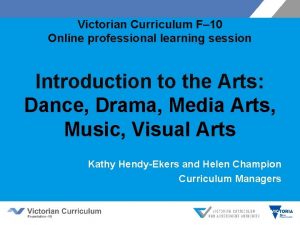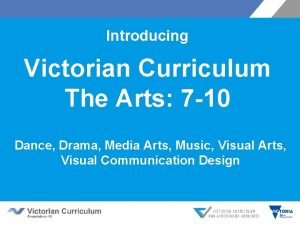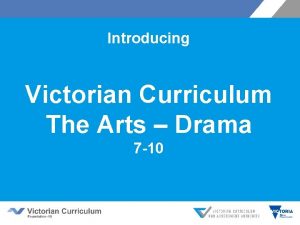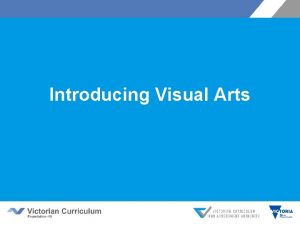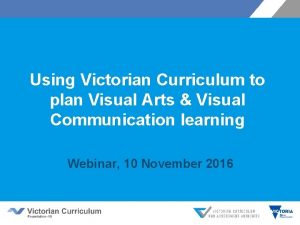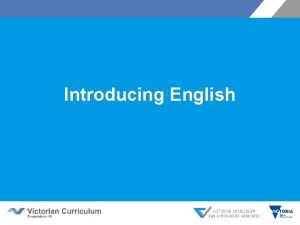Introducing Visual Arts Victorian Curriculum F 10 Released





- Slides: 5

Introducing Visual Arts

Victorian Curriculum F– 10 • Released in September 2015 as a central component of the Education State • Provides a stable foundation for the development and implementation of whole-school teaching and learning programs • The Victorian Curriculum F– 10 incorporates the Australian Curriculum and reflects Victorian priorities and standards http: //victoriancurriculum. vcaa. vic. edu. au/

Aims The Visual Arts curriculum aims to develop students’: • conceptual and perceptual ideas and expressions through design and inquiry processes • visual arts techniques, materials, processes and technologies • critical and creative thinking, using visual arts languages, theories and practices to apply aesthetic judgment • respect for and acknowledgement of the diverse roles, innovations, traditions, histories and cultures of artists, craftspeople, designers, curators, critics and commentators • respect for visual arts as social and cultural practices, including industry practices • confidence, curiosity, imagination and enjoyment and a personal aesthetic through engagement with visual arts making, viewing, discussing, analysing, interpreting and evaluating.

Structure Strands Explore and Visual Arts Express Ideas Practices Present and Perform Respond and Interpret Achievement standards • The first achievement standard is at Foundation and then at Levels 2, 4, 6, 8 and 10. • A curriculum for students with disabilities is provided in this learning area.

Key messages • Each Arts discipline is based on two overarching principles: Ø students learn as artist and as audience Ø students learn through making and responding • The addition of an achievement standard in Foundation reflects the advice in Victorian Curriculum F– 10: Revised curriculum planning and reporting guidelines about the importance of the Arts in the early years of schooling • Students explore traditional, contemporary and evolving visual conventions used in artworks of diverse styles and composition. These may include combinations of the: Ø conventions such as composition and style, the art elements of line, shape, colour, tone, texture, form, sound, light and time Ø art principles of emphasis, movement, rhythm, unity, variety, space, repetition, balance, contrast and scale.

